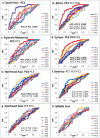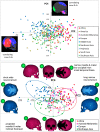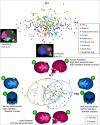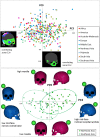Global patterns of the cranial form of modern human populations described by analysis of a 3D surface homologous model
- PMID: 35970916
- PMCID: PMC9378707
- DOI: 10.1038/s41598-022-15883-3
Global patterns of the cranial form of modern human populations described by analysis of a 3D surface homologous model
Abstract
This study assessed the regional diversity of the human cranial form by using geometric homologous models based on scanned data from 148 ethnic groups worldwide. This method adopted a template-fitting technique for a nonrigid transformation via the iterative closest point algorithm to generate the homologous meshes. Through the application of principal component analysis to 342 sampled homologous models, the largest variation was detected in overall size, and small South Asian crania were clearly verified. The next greatest diversity was found in the length/breadth proportion of the neurocranium, which showed the contrast between the elongated crania of Africans and the globular crania of Northeast Asians. Notably, this component was slightly correlated with the facial profile. Well-known facial features, such as the forward projection of the cheek among Northeast Asians and compaction of the European maxilla, were reconfirmed. These facial variations were highly correlated with the calvarial outline, particularly the degree of frontal and occipital inclines. An allometric pattern was detected in facial proportions in relation to overall cranial size; in larger crania, the facial profiles tend to be longer and narrower, as demonstrated among many American natives and Northeast Asians. Although our study did not include data on environmental variables that are likely to affect cranial morphology, such as climate or dietary conditions, the large datasets of homologous cranial models will be usefully available for seeking various attributions to phenotypic skeletal characteristics.
© 2022. The Author(s).
Conflict of interest statement
The authors declare no competing interests.
Figures







References
-
- Beals KL, et al. Brain size, cranial morphology, climate, and time machines. Curr. Anthropol. 1984;25:301–330. doi: 10.1086/203138. - DOI
Publication types
MeSH terms
LinkOut - more resources
Full Text Sources

